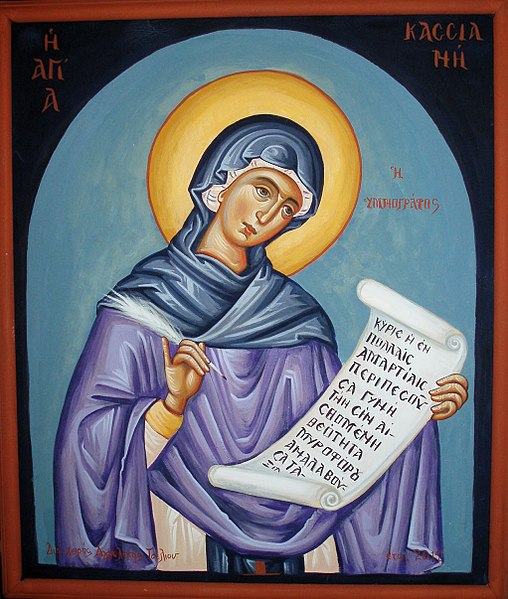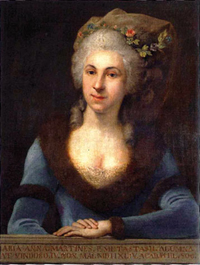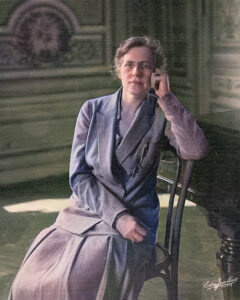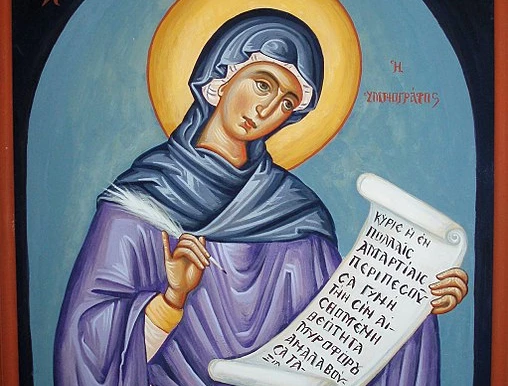Uncategorized
Women Composers that we might have forgotten (or never knew about).
Female composers
Women’s artworks, along with history, have been hidden or poorly visible because of their role in society. We know several stories (mostly in the past) about women struggling to get their book published, their play released, or to get their music appreciated. It wasn’t rare that woman used masculine nicknames to get their work “recognized” -which is why we still have trouble recognizing who the real composer was- and even then much of the work hasn’t made it through time.
Let’s have in mind all the art and works that never got to be created, due to the lack of resources and opportunities that men of their times did have.
Thankfully the situation changed in the majority of the world, and now we are able to attribute recognition to every artist. Also including the ones who weren’t appreciated until now.
That’s what this composers list is about: Women composers since ancients times to the present that everybody should know.
KASSIA (Or Kassiane) (810-867)
From a high-class society family, in Constantinople, she published around fifty pieces, more than thirty were hymns which are used nowadays for the eastern orthodox liturgy.
Her works got included in the Triodon printed in Venice in 1601, and they are the only ones written by a woman.

BEATRIZ DE DÍA (1140 – 1212)
She was a minstrel in the Middle Age and the most famous of a group of minstrels of age-old music that were active during the centuries XII and XIII. Originally from the south of France.
Her manuscripts, songs and poems, run all over France and the north of Italy. Of all the music she made, only five songs made it through the pass of the time. One of them, written in Occitan, “A chantar m’er de so qu’eu no volria” is the only one intact. It can be found in “Le manuscript di roi” – a collection of songs copied around 1270 for Carlos de Anjou-.
MADDALENA CASULANA (1544-1590).
Performer of the laúd, singer and composer, and the first woman who got her pieces printed and published in the occidental history; like “Il Desiderio (Florencia, 1566) or “Il primo libro de Madrigali” (Venecia 1568).
Her style is highly contrapuntistic and chromatic, full of beautiful melodies.
FRANCESCA CACCINI (1587-1640)
Francesca was the first woman to write an opera (“La liberazione di Ruggiero dall’isola d’Alcina”, 1625) which was really successful. She was a singer, virtuoso of clavichord, lute and guitar; and her works were mostly religious, vocal (for one, two, and three voices) and instrumental.
Her father was Giulio Caccini, an famous singer and composer. Maybe because of this “facility”, she got to make intermezzos for the court of the Médici.
BARBARA STROZZI (1619-1677)
Barbara was one of the first women to have her music published in her own name which was a huge movement in not only music but society as well.
Most of Barbara’s work was written for accompanied female voice. She was a capable lute player and developed a reputation as one of the best singers of the time.
Her especialities within composition were her intricate word settings and interesting harmonies.
Her father was incredibly supportive of her works and would help arrange them to send to competitions whilst she was growing up.
https://www.youtube.com/watch?v=1F458aC_FUM
MARIANNE VON MARTINEZ (1744-1812)
Originally from a Carlist family in Naples that moved to Viena, and with no relation with Spain even though her surname. She made a lot of vocal music, knowing that she had an excellent capacity to sing (big intervals, lots of different colours).
Besides several cantatas (cantata), sonatas and one symphony, she made two oratories for a poem in Italian of her good friend Metastasio. She also collaborated with other composers like Antonio Caldara or Saverio Mercadante.

MARÍA TERESA VON PARADIS (1759-1824)
María was blind since little and got to be a known pianist of her time. She also learnt composition and counterpoint.
Mozart found her loyal to her way of interpreting his musical thoughts. In 1784 she settled in Paris, and later London, Belgium and other important European cities of the moment. She went back to Viena, where she made most of her work with the musical writing system which her friend – Riedinger, who was also blind – invented.
FANNY MENDELSOHN (1805-1847)
Fanny was a great German composer and pianist who was also Felix Mendelsohn’s sister.
It has been said that she had written about 500 musical compositions including piano focused pieces, Lieder, Chamber music, Cantatas and Oratorios.
Despite most of her compositions existing only on manuscript due to gender discrimination, six of her songs were published under her brothers name in his two sets of twelve songs (op. 8 & 9 in particular).
https://www.youtube.com/watch?v=ti1eZ2B63Ro
PAULINE VIARDOT-GARCÍA (1821-1910)
She was a mezzo-soprano and composer originally from France and with Spanish ancestry. Her sister was the grand soprano María Felicitá (“La Malibrán”). Even though she died young in an accident, her works include nocturnes, ariettas, operettas and romances. Recently, the soprano Cecilia Bartoli sang on her disc one of Pauline’s pieces, “Rataplan”.
NADIA JULIETTE BOULANGER (1893-1979)
Pianist, and composer from France, who taught piano in the conservatory of Paris. She made several Sinfonica, chamber and piano pieces. Juliette was the first woman that got her works to be played by the most prestigious orchestras in America and Europe, like the BBC Symphony or New York Philarmonic. We could consider her one of the best women compos
Her sister, Lily Boulanger, who was also a composer and she was the winner of the Grand prize of Roma in 1913 with her cantata “Faust et Helena.”

HILDA DIANDA (1925 – present)
She is an Argentinian composer who travelled around Europe to study and investigate music and in places like “International Courses of New Music”,(Germany) or “Group of musical investigations” (France). In 1964 she is given the merit badge by the Italian government.
After that, until 1971 she was a teacher in the “School of Arts” at the National College of Córdoba, Argentina.
JUDITH WEIR (1954 – present)
Judith was born into a Scottish family but grew up in Cambridge, England. She is especially known for being a female opera composer, with a vast repertoire that has been shown all over the world in countries including Belgium, America, Germany,
The Netherlands and more.
As well as operas she was a resident composer with the City of Birmingham Symphony Orchestra in the 1990s and since have composed many orchestral pieces for a number of professional and popular orchestras.
https://www.youtube.com/watch?v=0IVH8mAs6Es
KAAIJA SAARIAHO (1952 – present)
Kaaija is a Finish composer who is still thriving within her career. She is considered one of the most important female composers of the 21st-century. Founder of the Ears Open Group (which was founded in 1977 to advocate and import contemporary music) she is known to be experimental with her creations by combining live music and electronics to create highly polyphonic textures.
She also writes for Orchestra and operas and has won many compositional awards as well as appearing as a judge at the Toru Takemitsu Composition Award.
https://www.youtube.com/watch?v=Qj_P8qKb3Jo
GABRIELA ORTIZ TORRES (1964 – present)
Born in Mexico, Gabriela Ortiz Torres is one of the most renowned contemporary female composers. She went to the London College and to the Guildhall School of Music and Drama, where she studied composition, besides of México. Her musical work is influenced by the Mexican and Latin American folk music -since her parents were folk musicians – but you can also observe Europe tradition, contemporaneous and jazz elements.
CONCLUSION
As we can see, women made big progress in the field of music (as others as well), and these are just a few stories, compared to the amount more that there are. So many women had the talent and worked to show but, since the situation of the different times we’ve lived on, they were not capable of showing to us as much as we would’ve wanted. Anyway, in the western world, it is easy to say this; there are places around the planet where women still struggle to do their own things. Hopefully, and with everyone’s effort, we will make art, and music anywhere, something that anyone can also enjoy everywhere.
Do not miss related articles about:
The best pianists in the world
Author: Iris Kreiman
Collaborators: Laura Bevan

